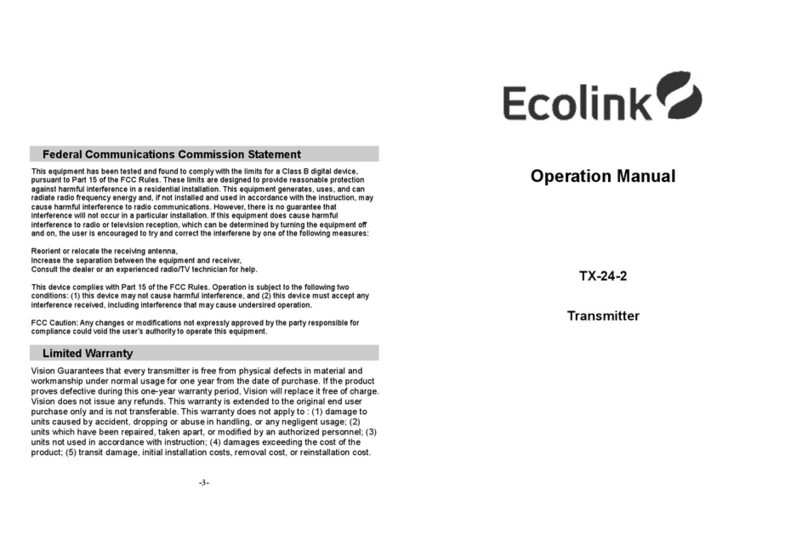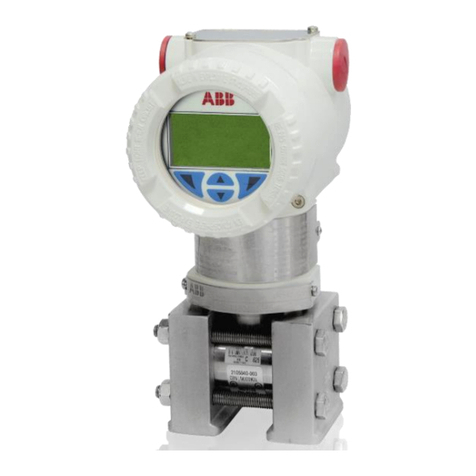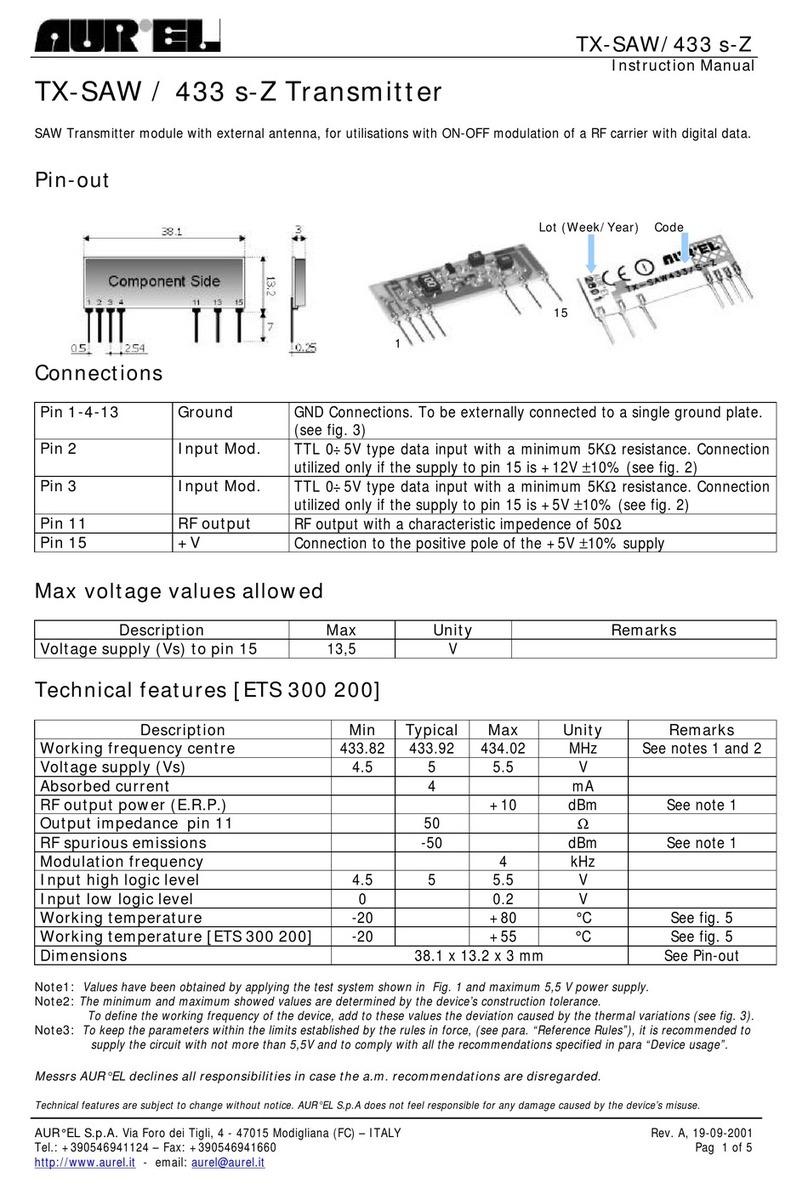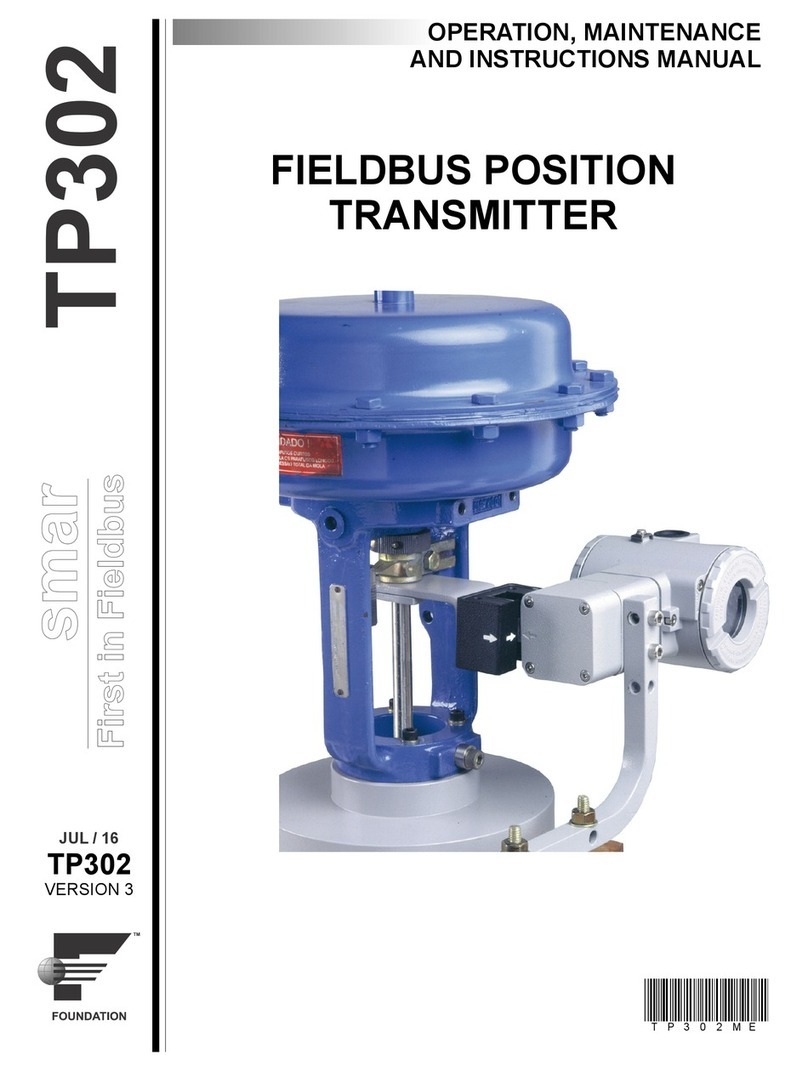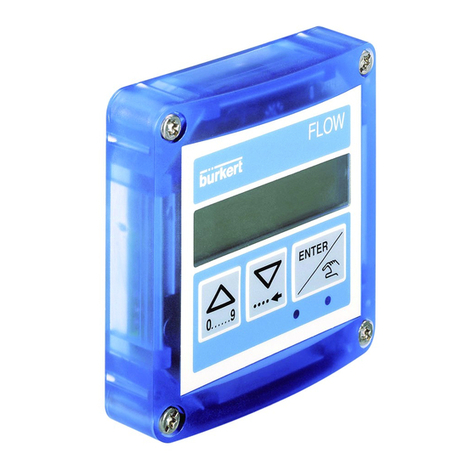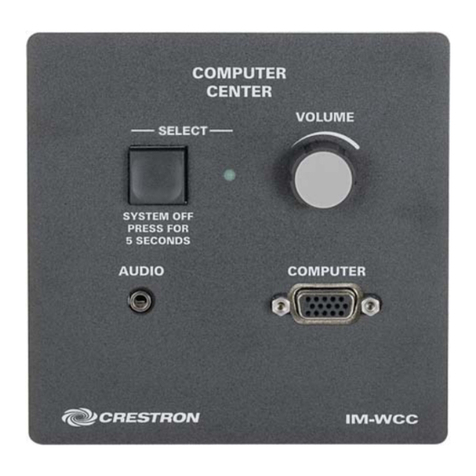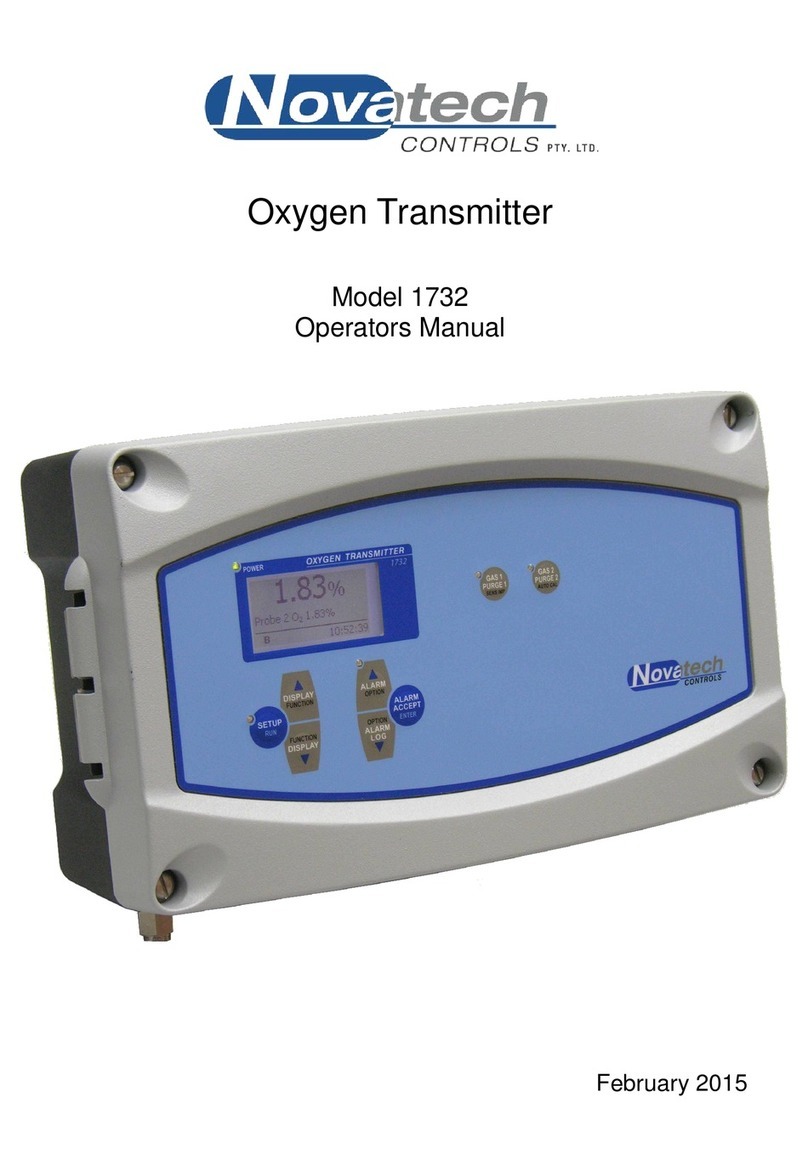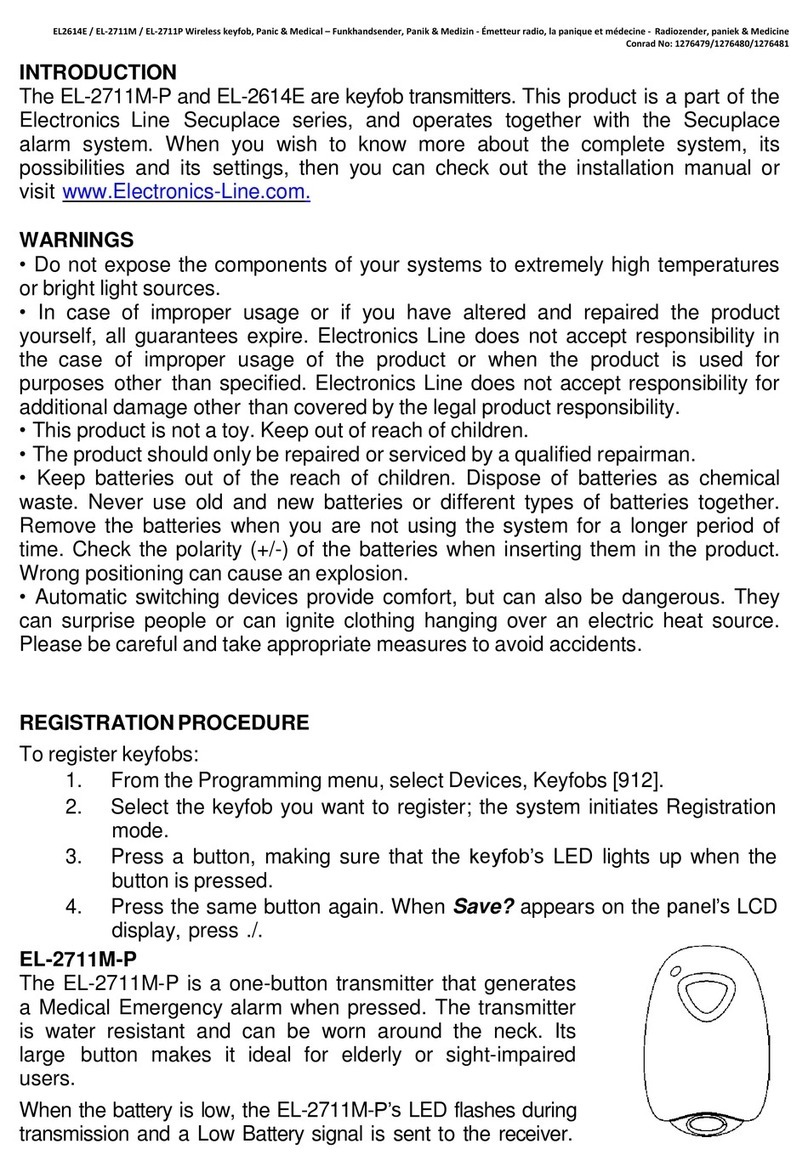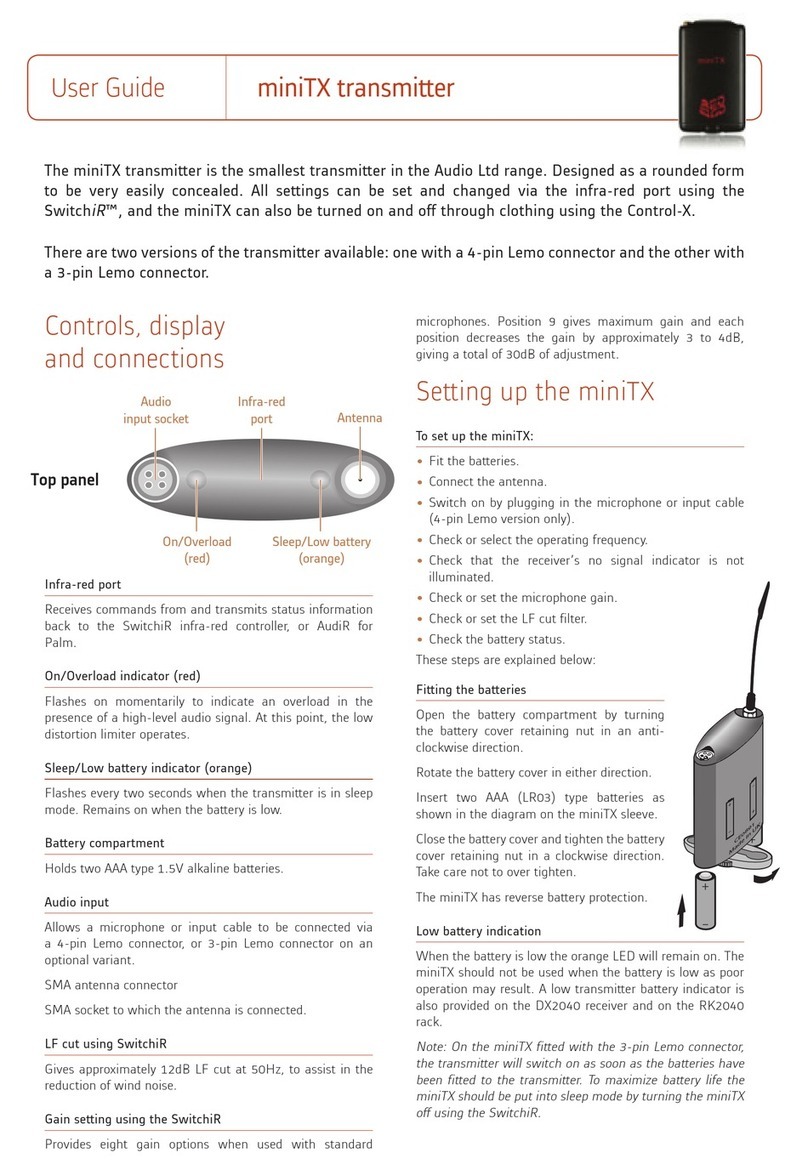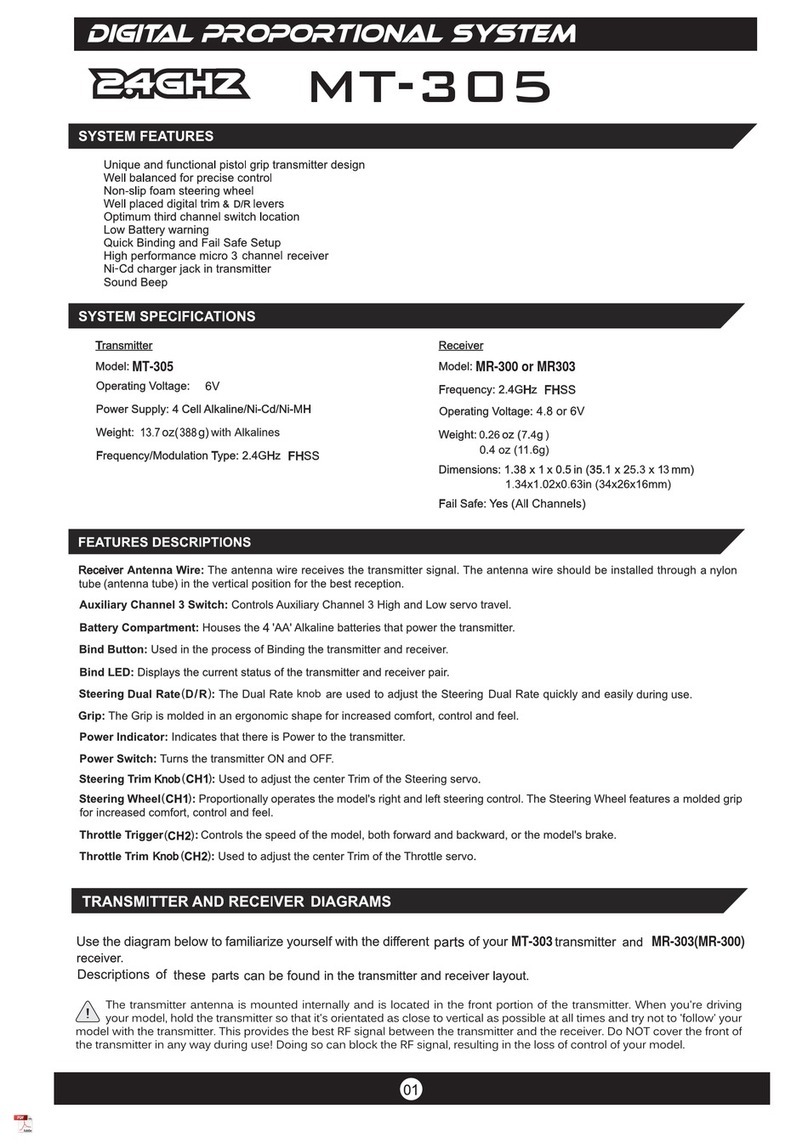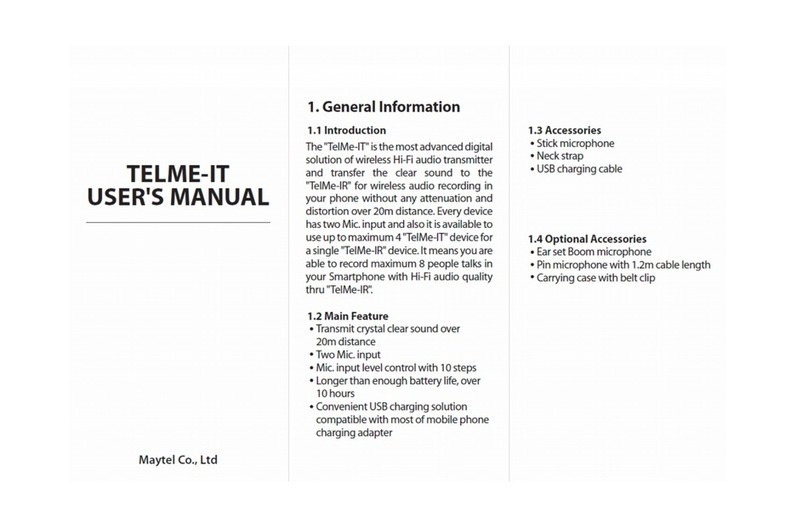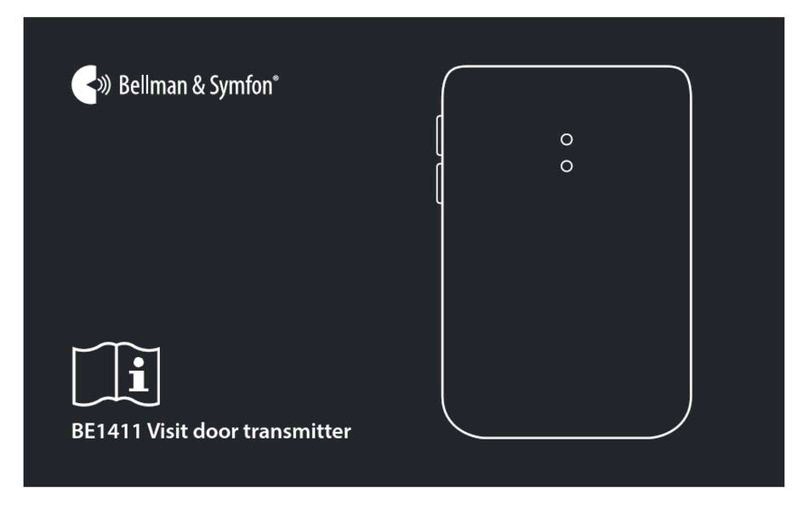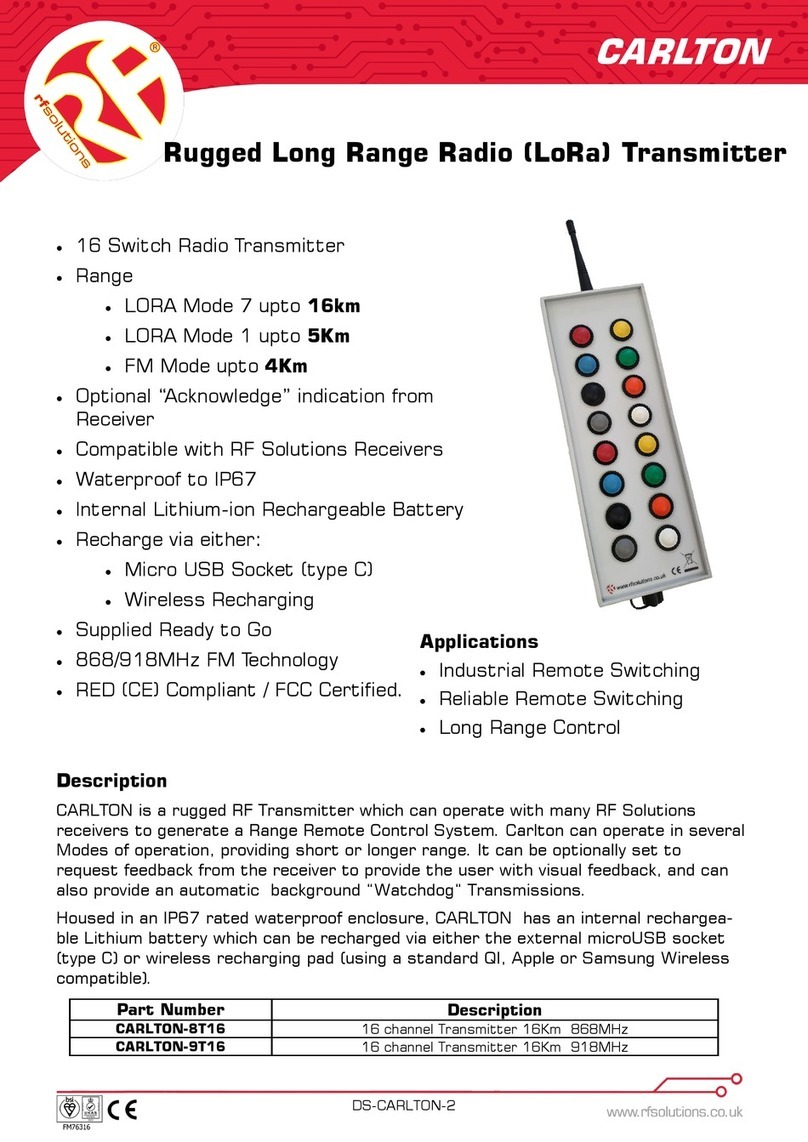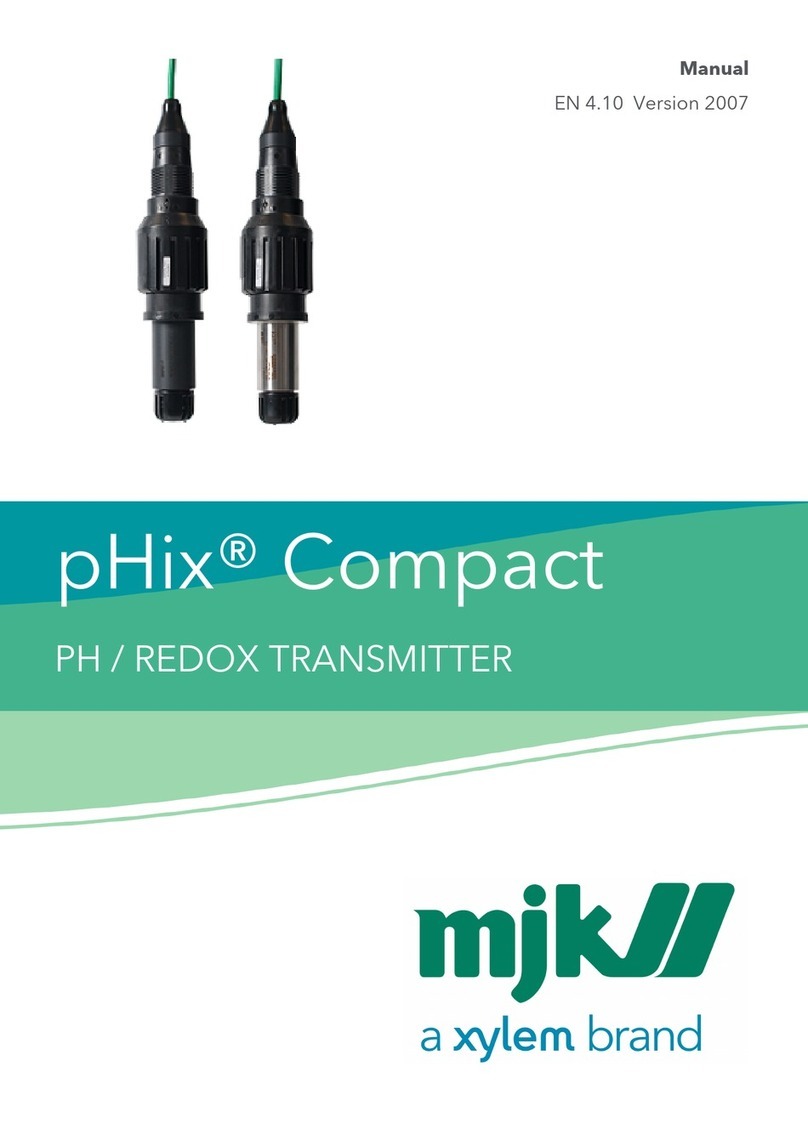Sensors & Software pulseEKKO Pro User manual

USER’SGUIDE
Copyright 2003 Sensors & Software Inc. 2003-00376-00
pulseEKKO PRO TLF
Transmitter


SENSORS & SOFTWARE INC. PRODUCT LICENCE, COPYRIGHT, LIABILITY AND WARRANTY INFORMATION
Important
Please read this document carefully before removing the SOFTWARE PRODUCT storage media from their protective cover
or assembling the HARDWARE PRODUCT. By removing the storage media or assembling the hardware, you are agreeing
to be bound by the terms of this agreement. If you do not agree to the terms of this agreement, promptly contact Sen-
sors & Software, Inc. at the address indicated at the end of this document.
Definition
The word PRODUCT as used herein defines any tangible item sold by Sensors & Software, Inc. and may be comprised
of HARDWARE PRODUCT which consists of physical objects and SOFTWARE PRODUCT which means computer programs,
codes and related support materials.
Software Product Licence Agreement
In order to preserve and protect its rights under the applicable laws, Sensors & Software, Inc. (hereafter S&S) does not
sell any rights to its Software product. Rather, S&S grants the right to use its software, diskettes (or other storage
media) and documentation (hereafter collectively called SOFTWARE PRODUCT) by means of a SOFTWARE PRODUCT
licence. You acknowledge and agree that S&S retains worldwide title and rights to all its software and that the SOFT-
WARE PRODUCT contains proprietary materials protected under copyright, trademark and trade secret laws.
Grant of Software Product Licence
In consideration of payment of the licence fee which is the price you pay for the SOFTWARE PRODUCT and your agree-
ment to abide by the terms and conditions of this Licence Agreement, S&S grants to you, the Licensee, a non-exclu-
sive right to use the SOFTWARE PRODUCT under the following conditions:
You may:
• use the SOFTWARE PRODUCT on a single workstation owned, leased or otherwise controlled by you
• copy the SOFTWARE PRODUCT for backup purposes in support of your use of the product on a single workstation
You may not:
• copy, distribute or sell copies of the SOFTWARE PRODUCT or accompanying written materials, including modified or
merged SOFTWARE PRODUCT to others
• sell, licence, sublicence, assign or otherwise transfer this licence to anyone without the prior written consent of
S&S
• modify, adapt, translate, decompile, disassemble or create derivative works based on the SOFTWARE PRODUCT
Termination
This licence is effective until terminated. You may terminate the licence at any time by returning the SOFTWARE PROD-
UCT and all copies to S&S. The licence will automatically terminate without notice by S&S if you fail to comply with any
terms or conditions of this agreement. Upon termination, you agree to return all copies of the SOFTWARE PRODUCT to
S&S.
Update Policy
S&S may create, from time to time, updated versions of its SOFTWARE PRODUCT. At its option, S&S will make such
updates available to licencees who have paid the update fee.
Product Warranty, Limited Remedy and Limited Liability
S&S warrants the PRODUCT to be free from defect in material and workmanship under normal use for a period of one
year (365 days) from the date of shipment. Any third party computer systems or other items not manufactured directly
by S&S purchased with any PRODUCT or independently from S&S are subject to the original manufacturer's warranty
and not the responsibility of S&S.
S&S makes no other warranties including, but not limited to, any implied warranty of merchantability or fitness for a
particular purpose. If this product is defective within the warranty period stated above, your exclusive remedy shall be,
at S&S’s option to replace or repair the S&S product or refund the purchase price of the S&S product. Except where
prohibited by law, S&S will not be liable for any loss or damage arising from this S&S product, whether direct, indirect,
special, incidental or consequential regardless of the legal theory asserted.

All statements, technical information, and recommendations related to S&S products are based on information
believed to be reliable, but the accuracy or completeness is not guaranteed. Before using this product, you must eval-
uate it and determine if it is suitable for your intended application. You assume all risks and liability associated with
such use. Any statements related to the product which are not contained in S&S current publications, or any contrary
statements contained on your purchase order shall have not force or effect unless expressly agreed upon, in writing,
by an authorized officer of S&S.
S&S warrants the diskettes or other storage media on which the SOFTWARE PRODUCT is furnished to be free from
defects in material and workmanship under normal use for a period of ninety (90) days from the date of purchase as
evidenced by a copy of your invoice.
Except as specified above, any SOFTWARE PRODUCT is provided "as is" without warranty of any kind, either expressed
or implied, including, but not limited to, the use or result of use of the product in terms of correctness, accuracy, reliabil-
ity, currentness or otherwise. The entire risk as to the results and performance of the PRODUCT is assumed by you. If
the PRODUCT is defective or used improperly, you, and not S&S or its dealers, distributors, agents, or employees,
assume the entire cost of all necessary servicing, repair or correction.
S&S's entire liability and your exclusive remedy for SOFTWARE PRODUCT shall be, at S&S's option, either
• the replacement of any diskette or hardware components which do not meet S&S's Limited Warranty and which
are returned to S&S postage prepaid with a copy of the receipt, or
• if S&S is unable to deliver a replacement diskette which is free of defects in material or workmanship, Licensee
may terminate this agreement and have the licence fee refunded by returning all copies of the SOFTWARE PRODUCT
postage prepaid with a copy of the receipt.
If failure of any PRODUCT resulted from accident, abuse or misapplication, S&S shall have no responsibility to replace
the SOFTWARE PRODUCT, refund the licence fee, or replace or repair the HARDWARE PRODUCT.
Do not tamper with any PRODUCT. PRODUCT contains no user serviceable parts. If tampering is evident in S&S’s
opinion, warranty is void and null.
No oral or written information or advice given by S&S, its dealers, distributors, agents or employees shall create a war-
ranty or in any way increase the scope of this warranty and you may not rely on any such information or advice.
Neither S&S nor anyone else who has been involved in the creation, production or delivery of the PRODUCT shall be lia-
ble for any direct, indirect, special, exemplary, incidental or consequential damages, claims or actions including lost
information, lost profits, or other damages arising out of the use or inability to use this PRODUCT even if S&S has been
advised of the possibility of such damages.
This warranty gives you specific rights. You may have other rights which vary from province to province, territory to ter-
ritory and certain limitations contained in this limited warranty may not apply to you.
General
pulseEKKO®, Noggin®, SpiView®, Conquest®and SnowScan®are registered trademarks of S&S. No right, licence, or
interest to such trademarks is granted hereunder with the purchase of the PRODUCT or the SOFTWARE PRODUCT licence.
Governing Law
In the event of any conflict between any provision in this licence agreement and limited warranty and any applicable
provincial legislation, the applicable provincial legislation takes precedence over the contravening provision. This
agreement shall be governed and construed in accordance with the laws of the Province of Ontario, Canada.
Serviceability
Should any term of this agreement be declared void or not enforceable by any court of competent jurisdiction, the
remaining terms shall remain in full effect.
Waiver
Failure of either party to enforce any of its rights in this agreement or take action against any other party in the event of
a breach of this agreement shall not be considered a waiver of the right to subsequent enforcement of its rights or
actions in the event of subsequent breaches by the other party.

Acknowledgement
You acknowledge that you have read this agreement, understand it and agree to be bound by its terms and conditions.
You further agree that this agreement is the complete and exclusive statement of agreement between the parties and
supersedes all proposals or prior agreements oral or written between the parties relating to the subject matter of this
agreement.
Should you have any questions concerning this agreement, please contact in writing:
Sensors & Software Inc.
1040 Stacey Court
Mississauga, Ontario
Canada L4W 2X8
Tel:(905) 624-8909
Fax:(905) 624-9365
E-mail: sales@sensoft.ca
pulseEKKO, Noggin, SpiView, SnowScan, Conquest, SmartCart, SmartHandle, Conquest for Windows, Win_EKKO, EKKO_Mapper,
EKKO_3D and EKKO_Pointer are Trademarks of Sensors & Software Inc.


pulseEKKO PRO TLF Transmitter i
Table of Contents
1 Overview ................................................................................................1
2 System Assembly and Startup .......................................................3
2.1 Antenna Assembly ...........................................................................3
2.2 Connecting up the Radar .................................................................4
2.3 Adding Optional Items ......................................................................6
2.3.1 Fiber Optic Remote Trigger and Beeper Unit..............................6
2.3.2 Odometer................................................................................7
3 Troubleshooting ..................................................................................9
3.1 Transmitter Problem: No Signal on Screen......................................9
4 Care and Maintenance ..................................................................... 11
4.1 General........................................................................................... 11
4.2 Radar Unit ...................................................................................... 11
4.3 Battery Power Requirements ......................................................... 11
4.4 Transmitter and Receiver Battery Maintenance ............................. 11
4.5 Testing Batteries ............................................................................12
4.6 Fiber Optics Cables........................................................................13
5 Helpful Hints .......................................................................................15
5.1 Handling Fiber Optic Cables ..........................................................15
5.2 Connecting the Fiber Optics...........................................................15
5.3 Batteries .........................................................................................15

ii pulseEKKO PRO TLF Transmitter
Appendix A Health & Safety Certification ....................................... A-1
Appendix B FCC Regulations ............................................................. B-1
Appendix C Instrument Interference ................................................C-1
Appendix D Safety Around Explosive Devices .............................D-1

pulseEKKO PRO TLF Transmitter 1-Overview
1
1 Overview
This manual describes how to use the pulseEKKO PRO Ground Penetrating Radar (GPR)
system transmitter.
System Assembly Section 2 on page 3 discusses in detail the step by step procedure for
& Startup: assembling the pulseEKKO PRO system and connecting the transmit-
ter to it.
Troubleshooting: Section 3 on page 9 presents some simple steps the user should go
through when the transmitter is not working as it should.
Care and Maintenance: Section 4 on page 11 discusses procedures for the care and mainte-
nance of your pulseEKKO transmitter.
Helpful Hints: Based on years of experience, Section 5 lists some helpful hints to
help make data collection and field operations run as smooth as possi-
ble.
Users should read Sensors & Software’s statement on issues regarding health
and safety in Appendix A - Health & Safety Certification.

1-Overview pulseEKKO PRO TLF Transmitter
2

pulseEKKO PRO TLF Transmitter 2-System Assembly and Startup
3
2 System Assembly and Startup
The modular design of the pulseEKKO Pro GPR makes the system very flexible and readily field-
portable. There are four essential components to the radar system: the control or console unit,
the transmitter assembly, the receiver assembly and the Digital Video Logger (DVL). The
transmitter and receiver assemblies are connected to the console unit via appropriate fiber optics
cables and the console is connected to the DVL via a RS232 cable (Figure 2-1). This section
discusses the detailed steps to follow to assemble the whole pulseEKKO Pro system.
Figure: 2-1
2.1 Antenna Assembly
The procedures for assembling the transmitter and receiver antennas are identical. A detailed
diagram of this assembly can be found in Figure 2-2. The assembly steps are as follows:
a) Check the two male brass antenna connector pins for damage; replace if necessary.
Insert the pins into the two threaded holes in the center of the antennas. Tighten the
pins finger-tight. DO NOT APPLY UNDUE FORCE !
b) Insert and tighten the two female brass antenna sockets into the bottom of the
transmitter and receiver electronic boxes. Tighten the sockets finger-tight. DO NOT
APPLY UNDUE FORCE !
c) Attach the antenna mounting block to the antenna by using the flathead screwdriver
to tighten the 4 (four) quarter-turn fasteners, ensuring that the male brass antenna
pins protrude up the center holes of the mounting blocks. Quarter-turn fasteners work
by aligning the screw in the socket and the pressing downward and tightening a

2-System Assembly and Startup pulseEKKO PRO TLF Transmitter
4
quarter of a turn. DO NOT APPLY UNDUE FORCE. It is usually best to have all the
screws properly aligned in their socket before tightening each one.
d) Carefully place the electronic boxes down onto the mounting block such that both
brass pins fully connect. Then use the 2 plastic draw latch connectors to hold the
electronics boxes on the mounting block.
e) With the transmitter and receiver power switched OFF, unlatch the 2 battery covers on
the sides of the electronics and open. Place one 12-volt battery on each side on the
electronics boxes making sure the positive (+) terminal faces inward toward the
electronics (the battery only fits properly in this orientation). Close and latch the
battery covers. Note that the system will run with only one 12 volt battery but using
two batteries is recommended.
f) Attach the adjustable handle to the antenna using the flat head screwdriver to tighten
the 4 quarter-turn fasteners as with the mounting block. This handle can then be
adjusted for height by loosening the 2 knurled knobs by hand, moving the handle to
the desired height and retightening the knobs (Figure 2-2).
Figure: 2-2
2.2 Connecting up the Radar
Once the antennas are assembled, the next step is to connect the antennas to the console and
the console to the DVL. Refer to Figure 2-1.
a) Check the fiber optic cables for damage by holding one end towards a light source
and looking into the other end. If light is not transmitted through the cable or appears
dim, then replace or repair the cable. Inspect the cable for any kinks or signs of dam-
age and, again, repair if necessary.

pulseEKKO PRO TLF Transmitter 2-System Assembly and Startup
5
b) Plug the black end of the single fiber optics cable (or dual fiber optics cable if you are
using a remote trigger or odometer; see below) into the INPUT (black) connector in
the transmitter and the other end into the single red receptacle labelled “Transmitter”
on the console.
c) Plug the dual fiber optics cable into the receiver, black to black and grey to grey, and
the other ends likewise into the double yellow receptacles labelled “Receiver” on the
radar console.
d) Using the RS232 cable, connect the console unit (white receptacle) to the serial port
on the DVL (the cable will only fit in one of the receptacles on the back of the DVL). It
is suggested that these connections be secured with proper screws to prevent
accidental disconnection during operation.
e) Connect the DVL to Power Supply Cable to the 9-socket connector on the back of the
DVL. Then connect the Power Cable Extension with Alligator Clips to the end of the
DVL to Power Supply Cable. The alligator clips can then be connected to a 12 Volt
battery. Make sure that the black clip is attached to the negative (-) and the red clip is
attached to the positive (+) battery terminals. If the alligator clips are connected to the
wrong terminals of the battery, the DVL will not be powered. When the DVL is
receiving power the upper red light on the front of the DVL will be illuminated.
f) Turn the transmitter and receiver ON by pressing the button on the top of each unit.
The red Power light should come on to indicate that power is being received. If not,
check that the batteries inside the Transmitter and Receiver are fully charged and
have been inserted the right way.
g) Turn the DVL ON by pressing any button on the front. As the DVL boots up, the lower
red light will come on and it will beep until it has fully booted up.
h) Connect the console power supply to the white POWER receptacle and turn power
supply ON, if necessary. If a battery cable is being used make sure that the black clip
is attached to the negative (-) and the red clip is attached to the positive (+) battery
terminals.
i) Before actually storing data, allow the console to run to reach ambient operating
temperature. This time varies depending on outside temperature; however, 5 to 10
minutes is generally sufficient.
j) When not collecting data, the transmitter, receiver and console should be turned OFF
to increase the life of the batteries.
Note that it is possible for the pulseEKKO Pro console and the DVL to share a
common 12 Volt power source like a battery. Simply connect the alligator clips on
the Console Power Supply cable and the Power Cable Extension with Alligator
Clips to the proper terminals of the battery.

2-System Assembly and Startup pulseEKKO PRO TLF Transmitter
6
2.3 Adding Optional Items
2.3.1 Fiber Optic Remote Trigger and Beeper Unit
To attach the Fiber Optic Remote unit to the pulseEKKO Pro deluxe handles, remove the screw
near the top of one of the handles. Then attach the two pieces of the handle attachment
assembly (Figure 2-3) and replace the screw as shown. Now press the Fiber Optic Remote onto
the handle and twist it a quarter-turn into place.
Figure: 2-3
For PVC handles, attach the Fiber Optic Remote to the handle as shown in Figure 2-4.
Figure: 2-4
To connect up the fiber optic remote trigger and beeper unit you should have a dual fiber optic
cable for the console to transmitter connection plus a short single fiber optic cable (Figure 2-5).
One of the two cables on the dual fiber optic cable will, if the above directions were followed,
already be connected from the red transmitter receptacle on the console to the black (INPUT)
receptacle on the transmitter.

pulseEKKO PRO TLF Transmitter 2-System Assembly and Startup
7
Figure: 2-5
The steps necessary to complete the connection of the remote trigger and beeper unit are:
1) The black fiber optic cable of the dual cable connects from the red REMOTE
receptacle on the console to the OUTPUT (grey) fiber optic connector on the remote
trigger and beeper unit. This connection is necessary for the trigger part of the remote
trigger and beeper unit to work.
2) The short single fiber optic cable connects from the INPUT (black) fiber optic
connector on the remote trigger and beeper unit to the OUTPUT (grey) receptacle on
the transmitter. This connection is necessary for the beeper part of the remote trigger
and beeper unit to work.
During data acquisition, the beeper will emit a beep as data are being collected.
As well, when the radar system is run in Step mode, data acquisition can be controlled using the
button on the remote trigger and beeper unit.
2.3.2 Odometer
The pulseEKKO Pro odometer is useful for collecting data at a user defined stepsize (1 cm to 10
m) without the necessity of a tape measure or survey makers.

2-System Assembly and Startup pulseEKKO PRO TLF Transmitter
8
The odometer has 2 settings: string and wheel. The wheel odometer setting can be used in
situations where a wheel or cart can easily be pulled across the surface. The string odometer
setting is useful when conditions are too rugged for the use of a wheel.
The odometer has both a fiber optic connection and an electrical connection (Figure 2-6). Either
connection can be used to connect the odometer to the console.
Figure: 2-6
1) Electrical Connection: To connect up the odometer using the electrical connection
you should have the proper cable for the console to odometer connection. Connect
the cable from the red electrical REMOTE receptacle on the console to the electrical
receptacle on the odometer. (Figure 2-6a)
2) Fiber Optic Connection: To connect up the odometer using the fiber optic
connection you should have a dual fiber optic cable for the console to transmitter
connection. One of the two cables on the dual fiber optic cable will, if the above
directions were followed, already be connected from the red transmitter receptacle on
the console to the INPUT (black) receptacle on the transmitter. (Figure 2-6b)
To complete the connection of the odometer the black fiber optic cable of the dual cable connects
from the red REMOTE receptacle on the console to the grey fiber optic connector on the
odometer.
With either of these connections made, when the radar system is run in Step mode, data
acquisition is controlled by the odometer.

pulseEKKO PRO TLF Transmitter 3-Troubleshooting
9
3 Troubleshooting
In this section, a thorough discussion of the error conditions will be presented together with a
systematic step-by-step procedure for tracking down the source of the problem.
3.1 Transmitter Problem: No Signal on Screen
a) In Graph mode try the Automatic timezero search. Keep the antennas about one
antenna length apart.
b) If the error comes up “No Signal Found” then try using the Full Search option in Graph
mode timezero search to look for the pulse.
If the pulse still cannot be found do the following checks:
Make sure the transmitter battery is properly charged and connected.
Check the condition of the single fiber optic cable to the transmitter, looking for any signs of
stress or damage. Replace or repair if needed.
Check that the brass antenna sockets in the bottom of the transmitter and the brass antenna pins
in the top of the antenna are properly tightened. Also check that there is a good contact between
them.
Set the system up with a time window of 1500 ns, stacks at 1024 and sampling interval at 800ps.
Unplug the grey transmitter fiber optics at the console.
With the system running, look for a red light coming from the grey hole in the console (single
hole). Plug this cable back in and unplug the INPUT (black) cable at the transmitter. Check for a
red light coming from the cable.
If the above process fails while checking the light in the cable then replace the cable.
If the above process fails while checking the light in the console, carefully remove the back from
the console unit and check the short fiber optic cables inside the unit. As a test, these short
sections of cable may be bypassed by plugging the long transmitter fiber optic cable directly into
the electronics. Replace or polish the short cable if needed.
c) If the signal is still not found, set the system up with the maximum time window (2048
ns on older systems, 32000 ns on newer systems) and stacks at one. Run in Graph
mode and use the Full Search option to look for signal. If the pulse is visible on the
trace, adjust it to the shaded region. Now you should be able to change the time
window back to the desired length and have timezero visible.
d) If the signal is still not found, contact Sensors & Software Inc.

3-Troubleshooting pulseEKKO PRO TLF Transmitter
10

pulseEKKO PRO TLF Transmitter 4-Care and Maintenance
11
4 Care and Maintenance
4.1 General
To operate the pulseEKKO Pro equipment in a geophysical field environment, the user should
exercise the normal care afforded other field instrumentation. Items that require specific
maintenance procedures are listed below together with detailed descriptions of the procedures.
All the equipment is ‘shower proof’ but will not tolerate total immersion. If the equipment is
immersed in water, open up the affected box, and dry it out before operating. If the equipment is
operated in very humid conditions, open up the boxes occasionally and allow the components to
dry out. Condensation inside the console may occur in cold, wet climates. If condensation is
seen, open up the console and dry out before applying power.
The interior of the console can become very hot very quickly if exposed to strong, direct sunlight.
High temperatures can affect system electronics and may lead to failures. Try to keep the
console well insulated against extreme temperatures. If a suspected heat failure does occur, stop
the system and allow it to cool down before retrying.
The equipment is housed in heavy duty boxes and can withstand a reasonable amount of
physical abuse. Items that are particularly sensitive to damage are the following.
4.2 Radar Unit
If operated in dusty conditions the console receptacles and fiber optic sockets may become dusty
inside. In such conditions open the unit up on a regular basis and blow out or vacuum all the
dust. It is best to place the plastic connector plugs into the receptacles when not in use.
4.3 Battery Power Requirements
The pulseEKKO Pro console is designed to operate from a 12 volts DC, 3 to 4 amp source such
as batteries or power supply. The input voltage tolerance is 10.2 volts to 15 volts. The console
draws 1 amp.
The transmitter employs one or two 12-volt batteries and draw less than 1 amp. They will, under
normal conditions, run for 4 hours or more on a pair of 2.3 AH batteries. Sets of rechargeable
lead-acid batteries are provided with the system for the transmitter.
4.4 Transmitter and Receiver Battery Maintenance
The pulseEKKO Pro transmitter both use one or two 12-volt sealed lead acid batteries. If they
are maintained in a charged condition they will give long life and reliable service. Improper use
and maintenance will greatly reduce their life.
Sealed lead acid batteries should NEVER be left in a discharged condition for any period of time.
Charge the batteries as soon as possible after use.

4-Care and Maintenance pulseEKKO PRO TLF Transmitter
12
Charge batteries at room temperature whenever possible.
The receiver and transmitter contain a voltage monitoring circuit that will turn off the unit when the
input voltage drops below 10.2 volts. If the voltage of the discharged batteries is measured some
time after they have been changed it will be higher than 10.2 volts (this is normal). Do not mix
charged and discharged batteries and DO NOT attempt to use discharged batteries a second
time.
If a battery has been deeply discharged or left in a discharged condition for some period of time it
may not accept charge immediately when it is connected to the charger (The fast charge LED will
not light). If the fast charge light does not come on within 6 hours the battery should be
considered damaged and discarded.
Do not assume that a battery that is still charging after 8 hours is nearing the end
of its charge cycle. Typical charging time for an empty battery is 12 hours from
start of fast charge. When charging a depleted battery it is normal for the charge
light to go out after 6-8 hours. The charger has gone into trickle mode only and
the battery must remain in the charger for the minimum 12 hours required.
Ensure that the batteries are fully charged before storing. If practical, store the batteries in a cool
place, 10oC (a refrigerator is ideal), but make sure the temperature is not likely to drop below -
30oC or the electrolyte may freeze and possibly split the case.
4.5 Testing Batteries
If you are experiencing reduced operation time with either your pulseEKKO Pro Transmitter the
problem will be the result of a damaged 12 V Battery or a poor battery connection in one of the
battery compartments. The pulseEKKO Pro Transmitter is designed to operate while using a 12V
battery in one battery compartment or both battery compartments. This feature can be used to
load test the batteries, as outlined below:
a) Label all batteries so that they can be distinguished from one another.
b) Insert fully charged suspect battery into the battery compartment of either the
Transmitter or Receiver unit.
c) Open the empty top battery compartment and measure the D.C. voltage at the two
contact points on the battery holder plate. A suspect battery will show a substantial
drop in voltage when the battery is loaded down (POWER ON) and will slowly drop to
less than 10 V after 2 hours of monitoring voltage. A good battery will remain at 12 V
or higher after 2 hours of monitoring voltage.
Other manuals for pulseEKKO Pro
1
Table of contents


